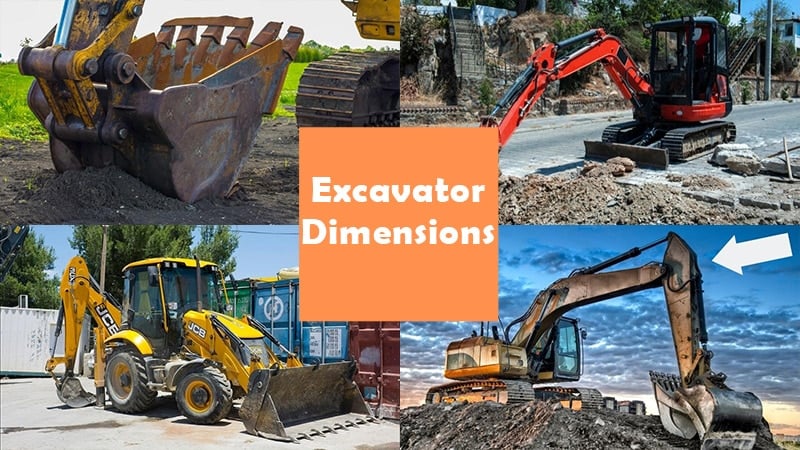We see them everywhere digging ditches, cleaning trenches, building roads and digging holes everywhere. This goes to show how significant excavators are in the modern world. These gigantic steel structures are also some of the largest vehicles on our roads.
They have three parts that ensure they do their job adequately. And these three parts are the reason why excavators are long and wide. While there are many things to learn about an excavator, learning about their sizes is quite sensible. Instead of scrolling through endless pages for excavator measurements, here is a detailed description of the dimensions.
Dimensions of a Standard excavator
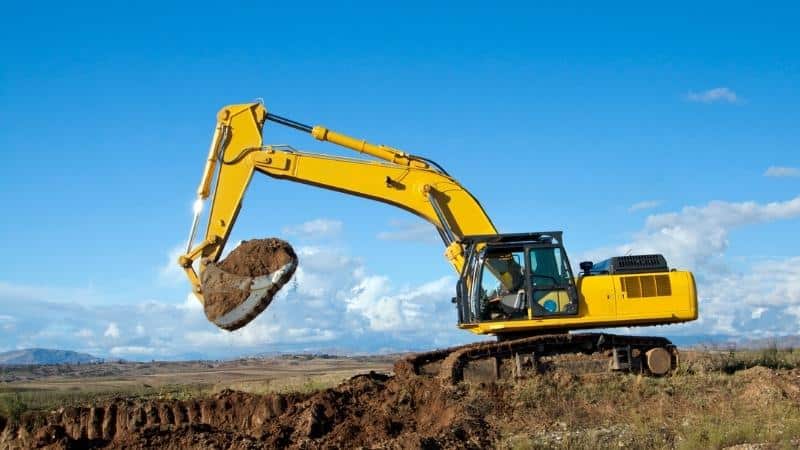
Standard excavators have a boom, stick and bucket connected to the front of the vehicle. The bucket arm bends and lowers to dig into soil and other materials. It then retracts toward the machine to lift the bucket contents.
The cab can rotate 360 degrees for the operator to dig, move and dump things around them while being stationary. These excavators have parallel tracks to improve traction on hilly landscapes and also make them longer. These excavators vary in size for simple to heavy-duty applications. The standard dimensions of a standard excavator are:
- Digging Depth – 11.3 ft. (3m)
- Digging Reach – 17.8 ft. (5 m)
- Ground Clearance – 1.1 ft. (30 cm)
- Height – 97.9 in (2.4 m)
- Height-top of Cab – 8.2 ft. (2 m)
- Track length on the ground – 16.7 ft. (5 m)
- Shoe width – 1.2 ft. (36 cm)
- Tail Swing Radius – 4.3 ft. (1.3 m)
- Width – 5.6 ft. (13 cm)
Dimensions of a Wheeled Excavator
Wheeled excavators are variants of standard excavators that have wheels instead of tracks. They can still perform like conventional excavators, especially on concrete or asphalt. They are not used for soft soil areas and sloppy landscapes. Wheeled excavators are smaller than standard excavators and their dimensions are given as follows;
- Height – 10.2 ft. (3 m)
- Length: 24.3 ft. (7 m)
- Ground Clearance – 1.1 ft. (14 cm)
- Height-Top of Cab – 10.4 ft. (3 m)
- Width – 8.2 in (20 cm)
- Upper Body Clearance – 4.1 ft. (1 m)
- Wheelbase – 7.9 ft. (2 m)
Dimensions of a Long-Reach Excavator

A long-reach excavator is another version of a standard excavator only that it has an extended boom and arm. These excavators offer longer reach for tackling large jobs faster and efficiently. They are popular for demolition jobs that require precision. The standard dimensions of a long-reach excavator are given as follows;
- Height-top of cab – 11.2 ft. (3.4 m)
- Handrail Height – 11.1 ft. (3.3 m)
- Boom – 34 ft. 9 in (10.6 m)
- Track Gauge – 9.6 ft. (2.9 m)
- Length – 50.2 ft. (15 m)
- Tail Swing Radius – 11.6 ft. (3.5 m)
- Ground Clearance – 2.4 ft. (73 cm)
- Counterweight Clearance – 4.8 ft. (1.4 m)
- Track Length – 15.5 ft. (4.7 m)
- Width – 8.5 ft. (2.6 m)
Dimensions of a Backhoe Excavator
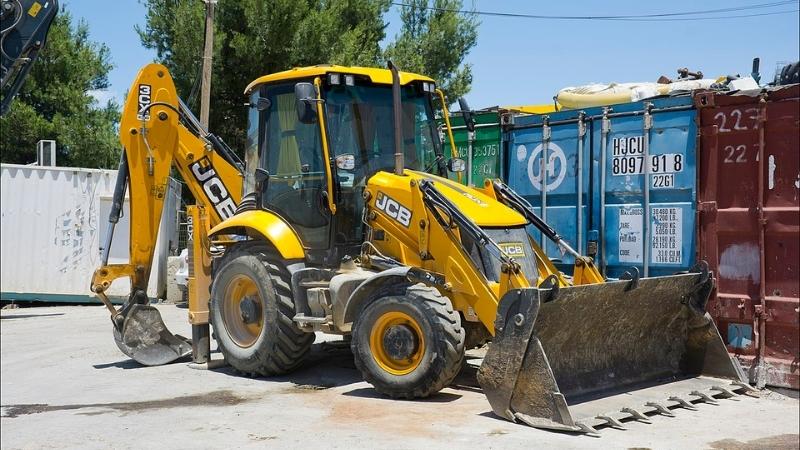
Backhoe excavators are used for construction, landscaping and mining. They are mostly confused with standard excavators since they have backhoe loaders with an elevator boom fixed on the back of the vehicle. It has a large bucket on the front for pushing, leveling and moving soil and other materials.
The arm on the rear operates like standard excavators only that they rotate 200 degrees instead of 360 degrees. The dimensions of a standard-size backhoe excavator are given as;
- Travel Length – 18 ft. (5.62 m)
- Axle Centerline – 6.8 ft. (2.17 m)
- Stabilizer Feet Clearance – 1.2 ft. (37 cm)
- Kingpost Clearance – 1.7 ft. (52 cm)
- Steering Wheel Center Height – 6.3 ft. (1.94 m)
- Cab Roof Height – 9.8 ft. (3 m)
- Total Travel Clearance – 7.7 ft. (2.35 m)
- Width – 7.7 ft. (2.35 m)
Dimensions of a Mini Excavator

The mini excavator is the smallest in the class of excavators and is mostly used to work in small spaces. They are equally small enough to be hauled using Class 1 and 2 trucks. They may have tracks or wheels depending on the brand and these additions will determine the entire length of the vehicle. They can rotate up to 200-360 degrees and their dimensions are given as follows;
- Center Ground Clearance – 0.8 ft.
- Ground Clearance – 0.8 ft. (24 cm)
- Height over cab -7.2 ft. (2m)
- Track Length – 3.4 ft. (1 m)
- Counterweight Clearance – 1.6 ft. (48 cm)
- Length – 12.1 ft. (3.6 m)
- Swing Radius – 3.5 ft. (1 m)
- Track Shoe Width – 9 ft. (3 m)
What are the Dimensions of an Excavator Bucket?
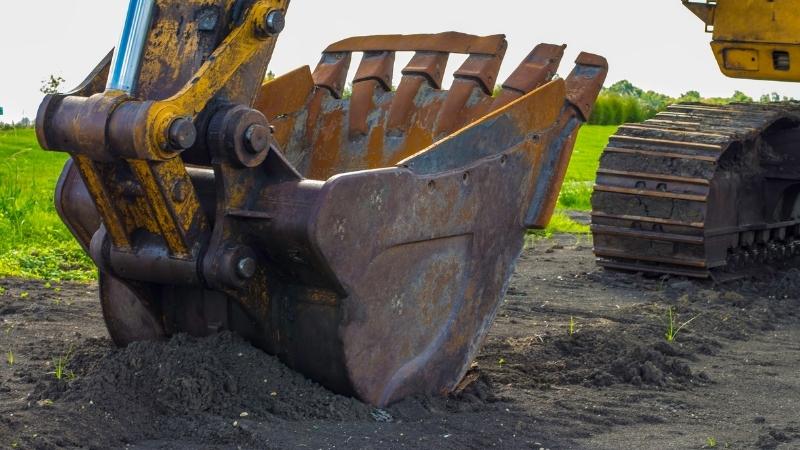
Excavators can be used to dig trenches, lay pipes, landscape and move snow. These buckets come in different sizes depending on their intended purpose. Here is a breakdown of different bucket dimensions according to their purposes.
General Purpose Bucket Dimensions
These are versatile buckets and are used for a variety of excavating tasks. They are also called digging buckets and come already installed on the vehicle. Digging buckets on mini excavators are 1.8 meters (5.9 ft.) wide, 37cm (14.5 in) deep and 37 cm (14.5 in) high.
The same buckets on standard and wheeled excavators are 1.8 meters wide, 86 cm deep and 62 cm high.
Grading Buckets Dimensions
Grading buckets have smooth edges, wide construction and flat cutting edges. These buckets are 40 centimeters wide (15.7 in), 1.2 meters (47 in) deep and 62 centimeters (24 in) high for standard excavators. For mini excavators, the width is 1 meter (39 in), height 54 cm (21 in), and depth 54 cm (21 in).
Tilting Bucket Dimensions
An angle tilt bucket is used like a grading bucket with a 45-degree rotation in both directions. These buckets are great for making precise slopes and allow excavators to shape or move more land without position changes. Tilting bucket dimensions are recorded depending on the depth. The dimensions for 30 (76 cm), 36 (91 cm), and 42-inch (106 cm) buckets are given as.
- 30-inch bucket
- Width – 30 inches (76 cm)
- Depth – 12.2 inches (30.9 cm)
- Height – 9.6 inches (24 cm)
- 36-inch bucket
- Width – 36 inches (91 cm)
- Depth – 12.76 inches (32 cm)
- Height – 18.9 inches (48 cm)
41-inch bucket
- Width – 42 inches (106 cm)
- Depth – 12.2 inches (31 cm)
- Height – 18 inches (46 cm)
What are the Dimensions of an Excavator Boom?
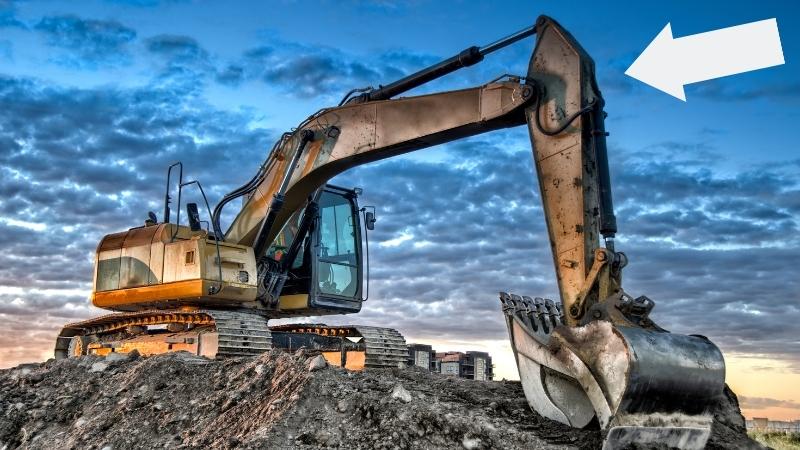
The standard or mono boom is the common type of boom used because it has a good reach and a decent bucket size. Some excavators have shorter booms and short sticks. A standard boom is 20’4” (6.2 m) long and with an 8’4” stick.
A two-piece boom is a versatile type because it allows changing of the boom bend to reduce working weight. A two piece boom on average is 22 ft. long.
Long-reach booms are great for use in water especially cleaning canals and ponds. The lengths may vary depending on the manufacturer. The average length of a long-reach boom is 27’ 11” (8.5 m).
Which is the Biggest Excavator in the World?
The Liebherr R9800 is the largest excavator in the world built in Germany and designed to handle large-scale mining tasks. It is 23.9 meters (75 ft.) long, 10.5 meters (34 ft.) wide and 11.7 meters (38 ft.) high. It has an operating weight of 800 tons and can lift over 150 tons of load.
Which is the Smallest Excavator in the World?
The Komatsu PC01-1 is the smallest excavator since it is only 2 feet (60 cm) long, 50 centimeters (1.6 ft.) wide and can dig up to 106 cm (3.5 feet). These are only used for smaller jobs like laying pipes, gardening and construction in tight spaces.
So far, this guide covers some of the crucial measurements of the numerous excavator parts. The information will come in handy when you are considering buying or hiring an excavator. It can also help you understand the amount of space you need in case you are operating one. Lastly, these majestic vehicles are quite work of engineering and these dimensions clearly show that.
The dimension of stuff has been an interest of mine ever since I was a child. What I believe is most fascinating about the dimension of stuff is how extremely long, tall and wide some objects are both on earth and in the universe.

